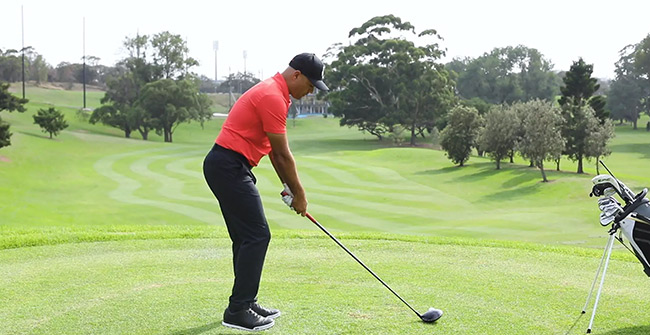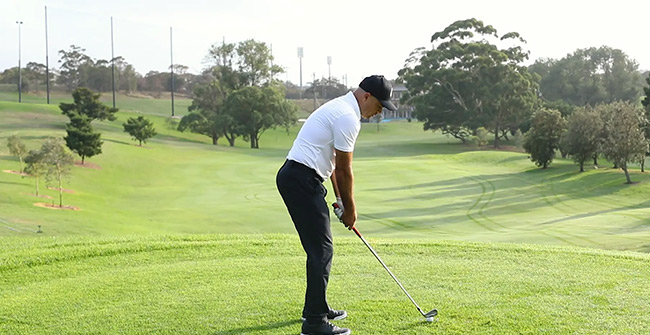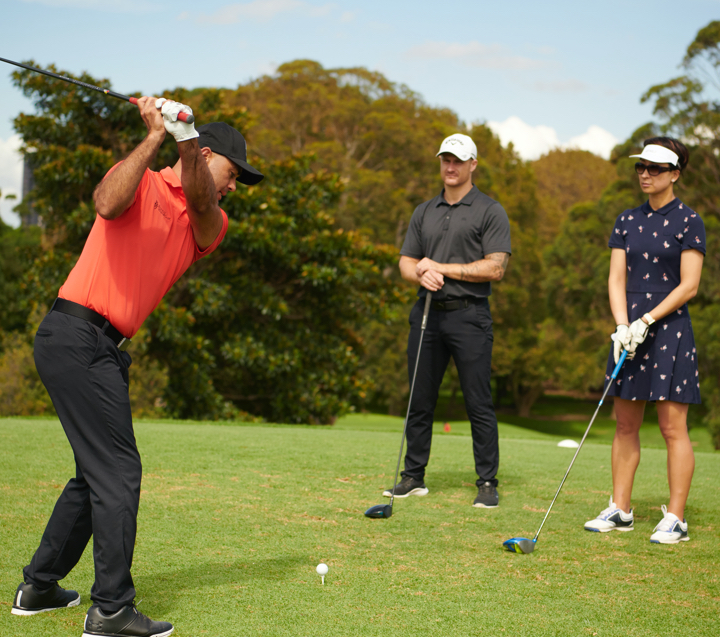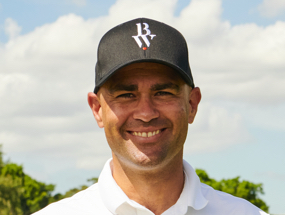“I always hit the ball so well on the driving range, and I just can’t replicate that on the golf course”. How many times do you find yourself saying or experiencing this?
As a coach, practice sessions that do not carry over to performance on the golf course is one of the top issues my clients come to me with.
There are a number of factors to consider when it comes to carrying your driving range performance over to the golf course. Here, I’ve highlighted my observations on making sure your practice translates to the course and tips for what to work on to improve your performance.
Pre-Shot Routine/Process
When we hit balls on the driving range, very rarely care if we hit the ball a little to the left or to the right. In the back of our minds, we know that if we hit a bad shot, we still get another shot at it. On the course, we do not get the luxury of that second shot!
Next time you are at the range, take the time to hit to different targets and penalise yourself if you hit the ball where you did not intend it to go. Take the time to visualise your target, visualise the shot shape, have a practice swing and then step up and pull the trigger.
Use a routine that suits you, and don’t overthink it!

Don’t Over-Rely On Your Driver
The driver is not the answer to better scoring.
My students tire of hearing this statement from me, but let’s face it — the majority of courses we play are not overly long.
Let’s break this down. Imagine playing a reasonable length par 4 at 350 metres:
- Hit a 5 iron 150 to 160 metres off the tee
- Hit a 7 iron 130 to 140 metres for your second shot
- At less than 100 metres remaining, you can now hit the green and still have room to putt twice and still get a bogey
This can be repeated for longer and shorter holes; finding fairways lowers scores!
Sound too simple? Well it really is that simple! We are programmed to think that we always need a driver. While it is a very handy club to have and gives us the distance, it can get us into a whole lot of trouble as well.
Next time you stand on a tee box, survey where the trouble is, how much room there is and think through the percentage play. Take your handicap into account, and if you have a shot on that hole, play it as an extra shot. You will be surprised how much your scores improve.
Know the Distances of Your Irons
How often do you get stuck “between clubs”? When you have 142 metres to the flag, do you consider the distance to the front, middle, or the back of the green? Do you consider playing the 130 metre or 150 metre shot?
Knowing where to land your shots is so much more important than “trying” to hit a certain distance. Distance devices such as GPS and Rangefinders are great, but can also get us feeling like we have to be “too precise”.

Simple Swing Thoughts
Quite simply, our swing is broken down into two movements:
- A backswing
- A follow through
When we hit golf balls, whether on the driving range or the golf course, we need to feel what helps with the movement back and what the follow through feels like. We then need to get this feeling with our practice swing and then execute when we step up to hit our shot.
Before swing thoughts, we also need to clear our heads of unnecessary distractions as well as let go of all tension. Come up with a swing thought routine and make sure you stick to it. Most bad rounds will start from a loss of focus and build up of tension.
Try Not To Worry About Your Score/Handicap
For me, this is the number one reason I notice when it comes to golfers not taking that range game to the course. When we have a handicap, there is always an expectation to play to that handicap. When we start to feel like we are falling behind, we then panic and try to make up for lost shots.
To add to the stress of playing to our handicap, we have a scorecard where we can plainly see where we have shots, how many holes are left, and where we think we may be able to make up shots. This is a sport where we simply cannot afford to get ahead of ourselves.
The next time you play a round of golf, focus on one shot at a time, one hole at a time. If you have a bad shot or a bad hole, try your best to let it go and go back to your simple swing thoughts, practice swings, and routines.

The Driving Range Is for Practice and the Course Is for Play
Finally, it is really important to understand that the driving range is where we try to work on feelings, make swing changes, and consciously alter bad habits and transform them to good ones. We cannot think too consciously out on the golf course, as this again will bring on tension in the golf swing.
Being out on the golf course is all about being in the moment and not thinking too much about why shots are both good or bad.
I am a big fan of more practice and fun rounds. I know this can be difficult for many people out there due to time constraints. But if one can get out for a few holes at twilight — even just 5 or 6 holes — it will help give you a better feeling out on the course. This will translate into swinging a bit more freely and preventing yourself from having fun and not focusing too much on technique.
Looking For More Ways To Improve Your Golf Game?
I hope you found these tips for translating your driving range game to the golf course. I update my blog regularly with helpful tips, strategies, and tools for improving your golf game. I also offer a free trial to my online academy for boosting your golf game.


